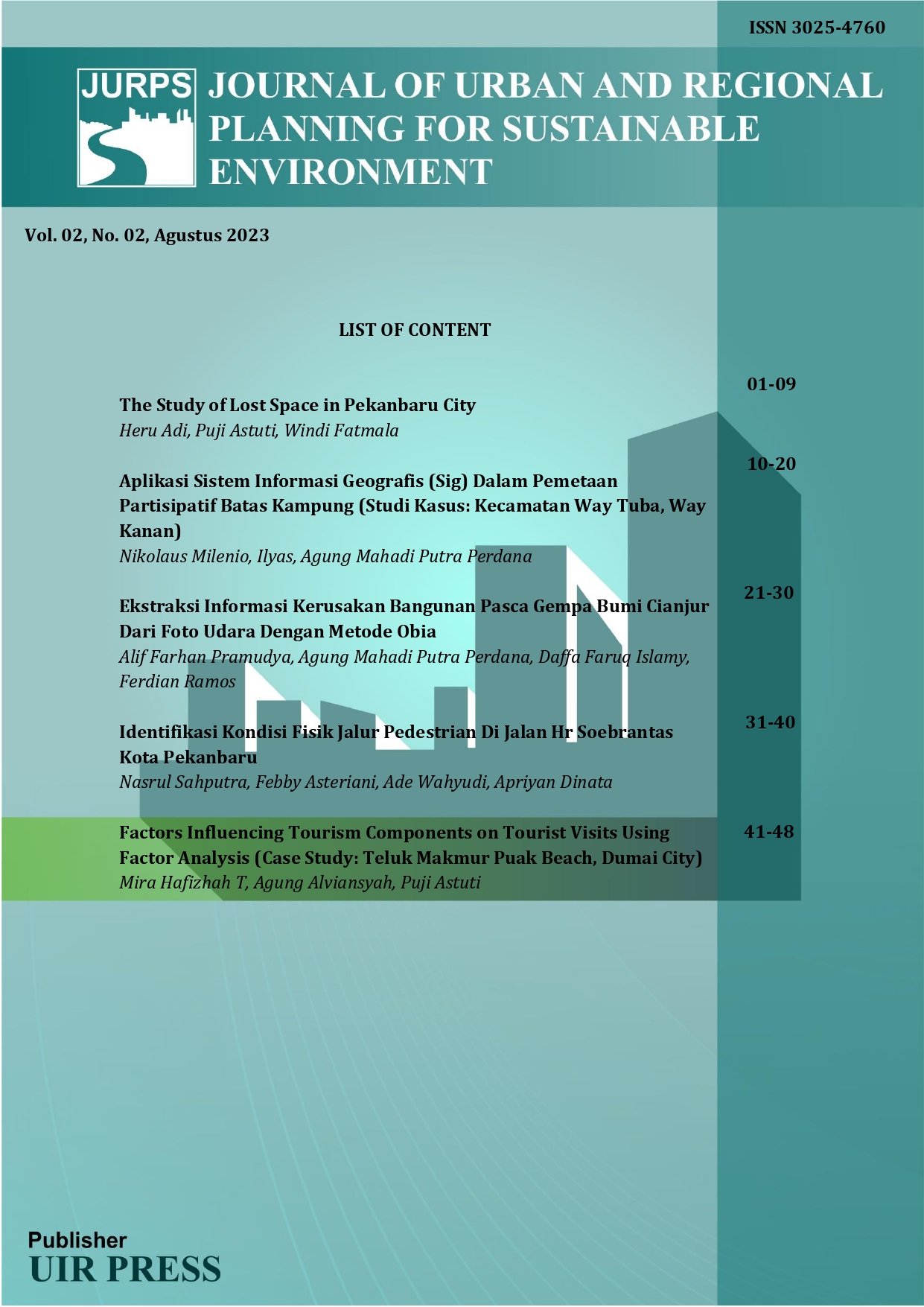The Study Of Lost Space In Pekanbaru City
Keywords:
Urban Voids, Public Space, Lost SpaceAbstract
The utilization of urban voids in Pekanbaru Kota Subdistrict grew no control causes problems in decreasing visual quality and slums. It happened because there were no clear rules regarding the utilization of urban voids in this City. This study aims to identify the distribution and utilization of urban voids becomes an active space. The approach of this research is to observe physical form city through figure/ground, ligkage and place. The targets achieved are identified the distribution, the factor that influence space, identified government regulation in the utilization and recommendation and direction for the design of urban voids. The analysis used are analysis of spatial, figure/ground, lingkage and place as basis to finding and the characteristics of urban voids it self. Data collected using observation techniques, open interview with purposive sampling to the relevant agencies. This riset was conducted in Pekanbaru Kota District, Pekanbaru City. The result obtained from this riset are : 1) Identification of six points a urban voids sporadic with types of spatial pattern and characteristic of urban voids, namely pattern of linear arch, angular, and organic. 2) The identification of the factor that form the urban voids, namely zoning regulation, the unwillingness of some contemporary institution to contribute to the management and utilization of urban voids. 3) The absence of specific policies related to planning, utilization and control urban voids. 4) Recommendations by designing urban voids with visualization.
Downloads
References
[2] Zahnd, Markus. Perancangan Kota Secara terpadu. Yogyakarta : Kanisius. 1999.
[3] Trancik. Roger. Finding Lost Space : Theories Of Urban Design. New York : Van Nostrand Reinhold Company. 1986.
[4] Catanese, A. J. History and Trends of Urban Planning. In Introduction to Urban Planning edited by Anthony J. Catanese dan James C.Snyder. New York: McGraw Hill. 1997.
[5] Poerbantanoe, Benny. The Lost City dan The Lost Space karena Perkembangan Pengembangan Tata Ruang Kota, Kasus Koridor Komersial Jalan Tunjungan Kotamadya Surabaya. DIMENSI (Journal Architecture and Built Environment). Volume 27 Nomor 2 Desember 1999.
[6] Badan Pusat Statistik (BPS) Kota Pekanbaru 2017
[7] Law Nr. 23. 2014. About Local Government. Republic of Indonesia
[8] Law Nr. 26. 2007. About Spatial Planning. Republic of Indonesia.
[9] Law Nr. 28. 2009. About Local Tax and Retribution. Republic of Indonesia.
[10] Law Nr. 5. 1960. About Basic Regulations on Agrarian Principles. Republic of Indonesia.
[11] Local Government Regulation Nr. 1 of Pekanbaru City. 2011. Long Term Development Planning of Pekanbaru 2005-2025. Indonesia.
[12] Local Government Regulation Nr. 7 of Pekanbaru City. 2017. MId Term Development Planning of Pekanbaru 2017-2022. Indonesia.
[13] Spreiregen. PD. 1965. Urban Design : The Architecture Of Town And Cities. NewYork, Mc Graw Hill Book Company.
[14] Lynch. Kevin, 1960. The Image Of The City : Cambridge, MA, The MIT Press.Mulyandari. H. (). Pengantar Arsitektur Kota : Aspek Pendukung Tata Kota.
[15] Chapin, F.S and J. Kaiser, 1979. Urban Land Use Planning. Chikago : Universityof Chicago Fress.
Downloads
Published
How to Cite
Issue
Section
License
Copyright (c) 2023 Windi Fatmala

This work is licensed under a Creative Commons Attribution 4.0 International License.






